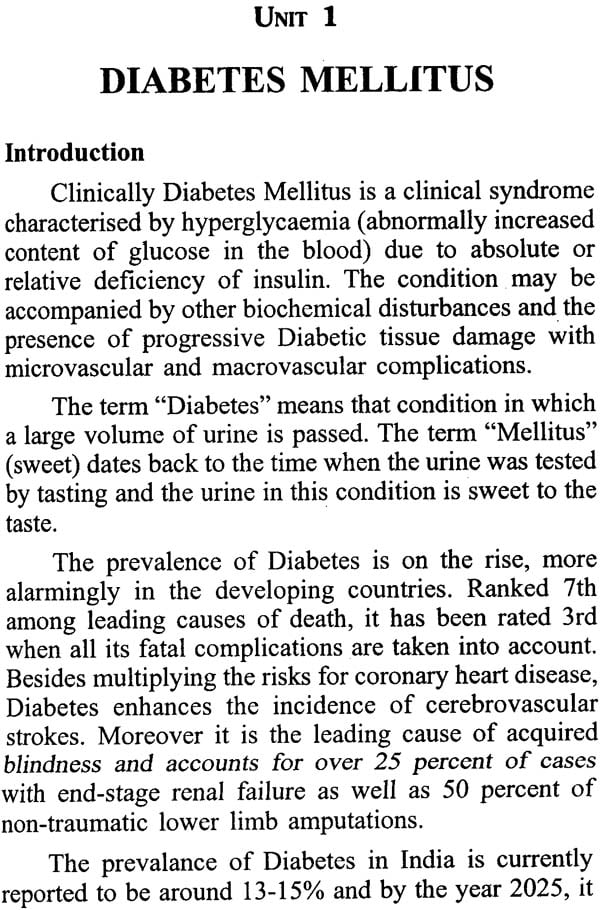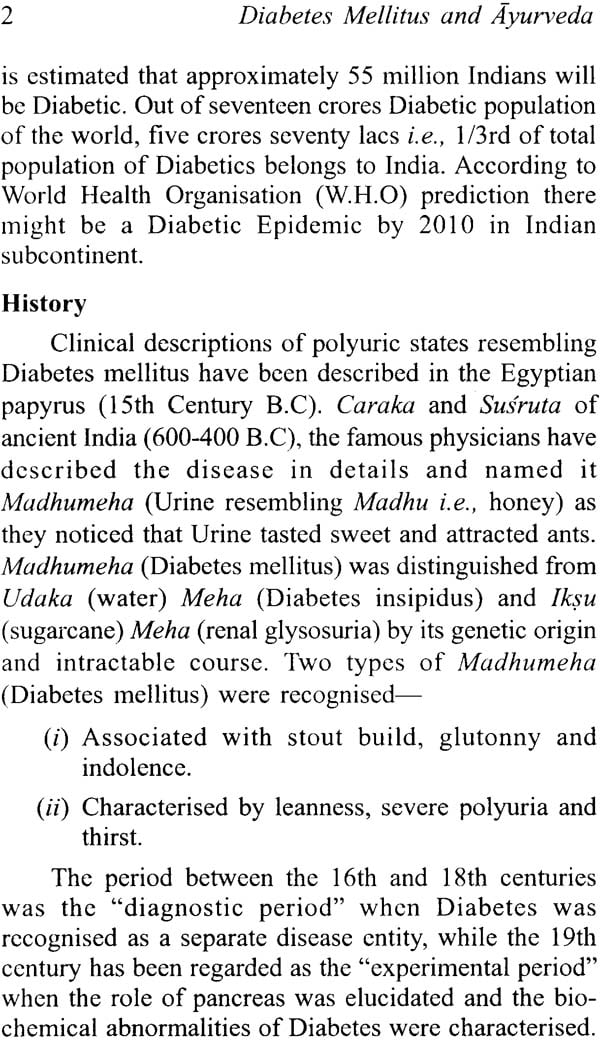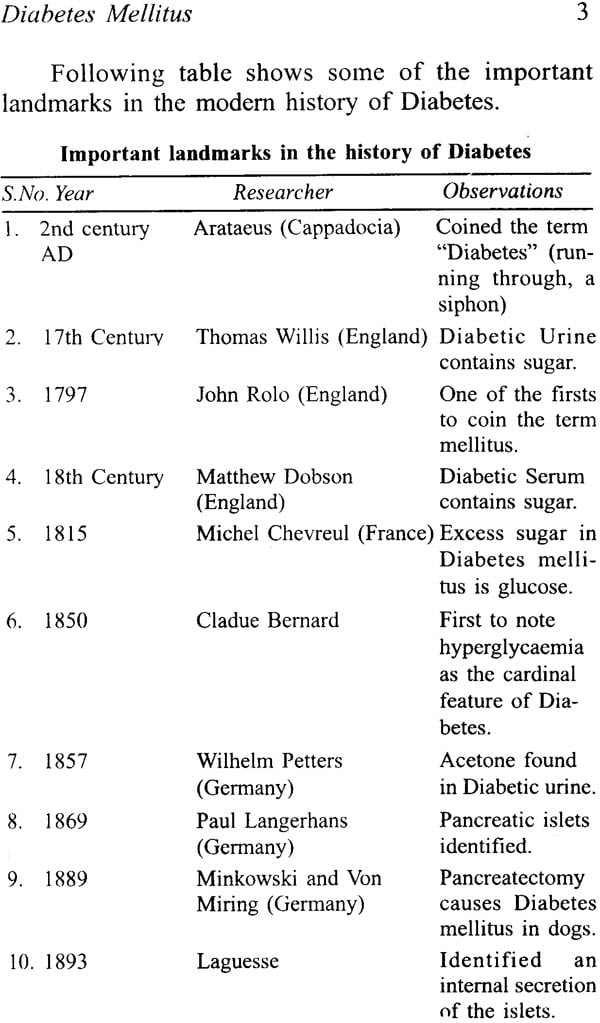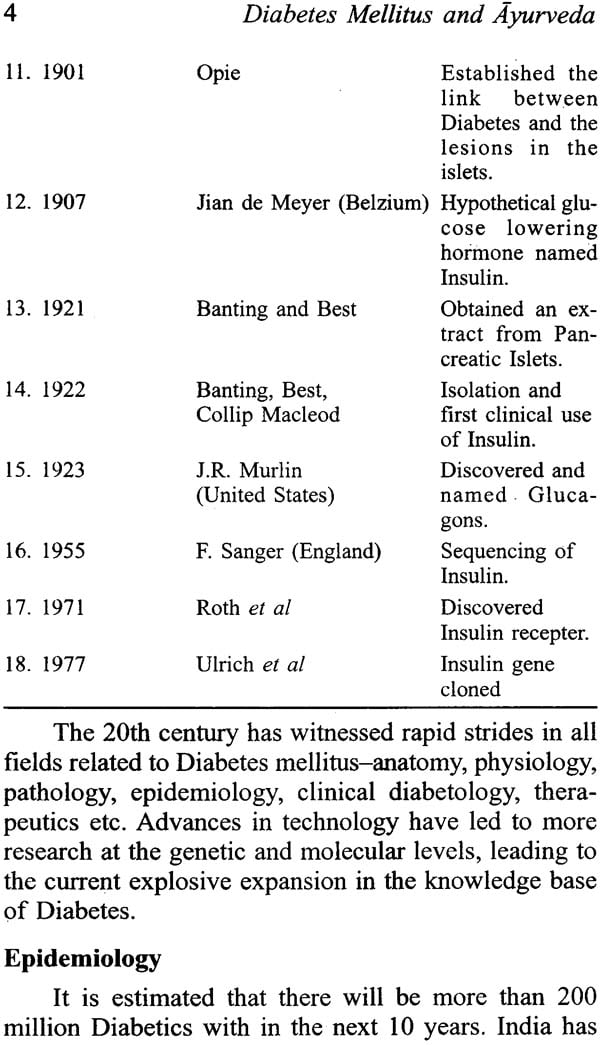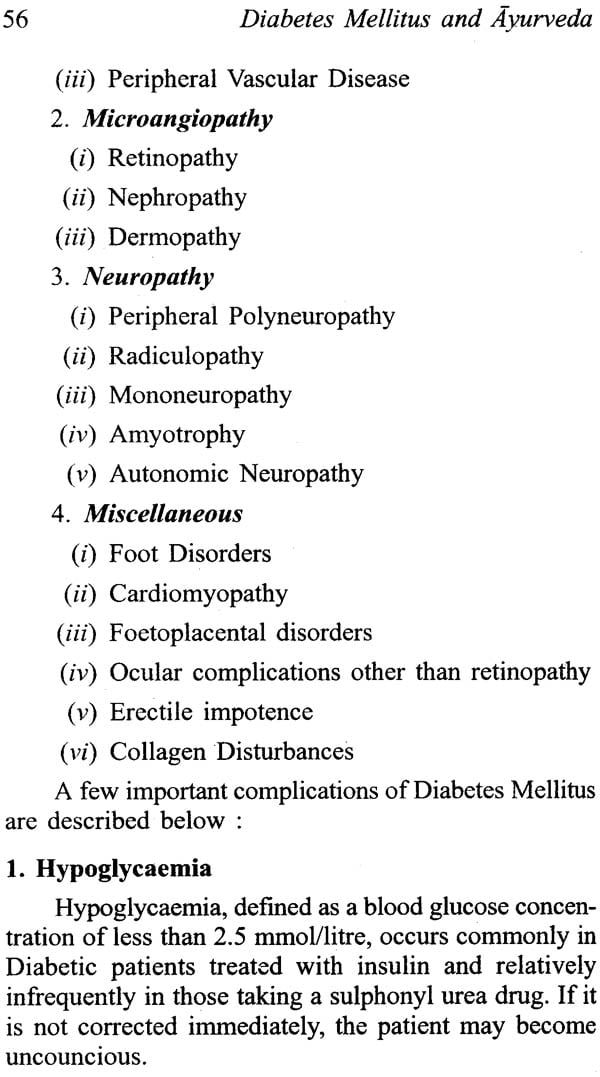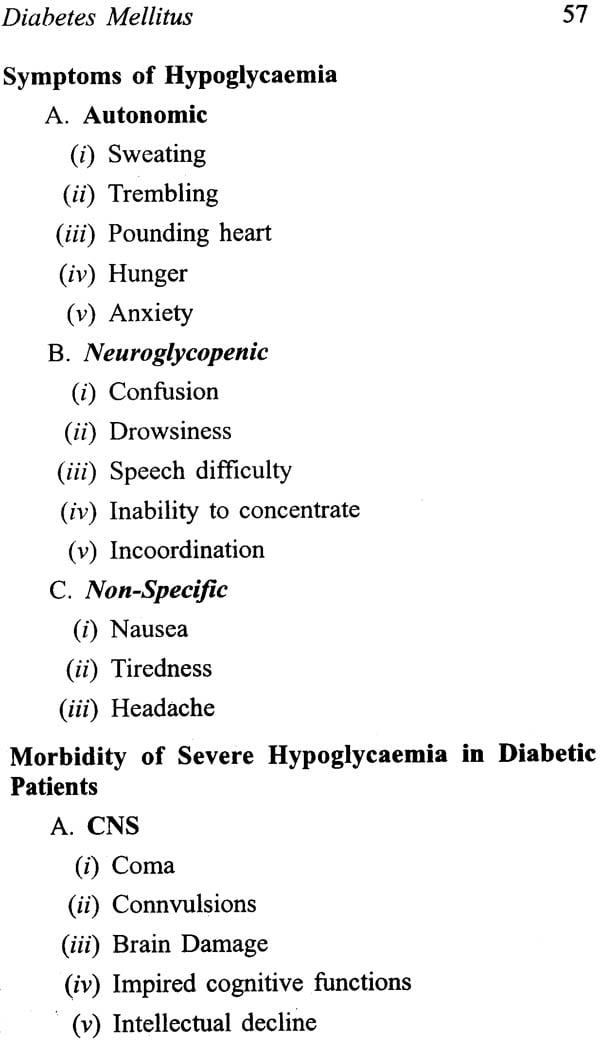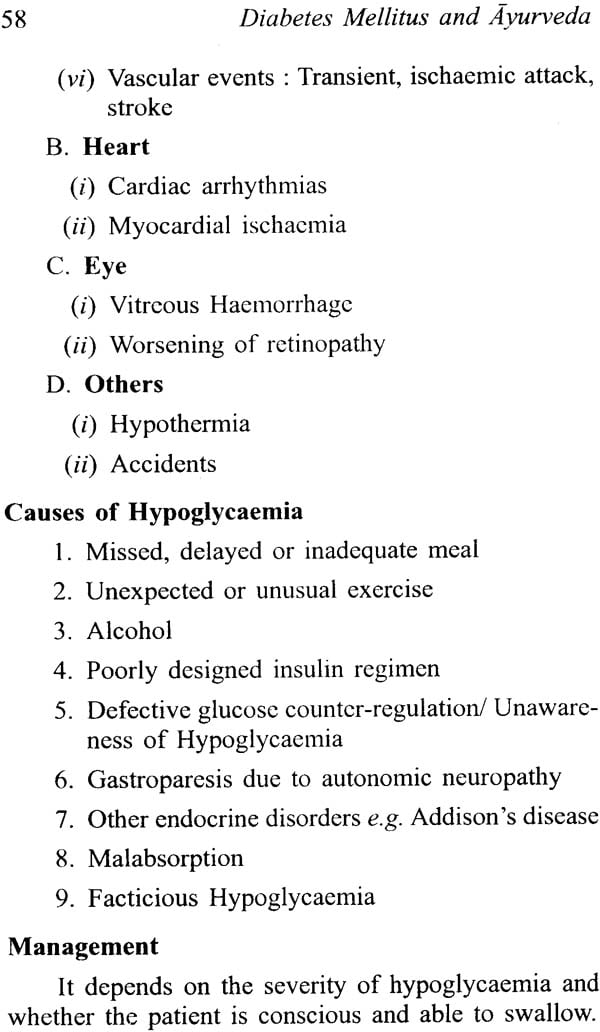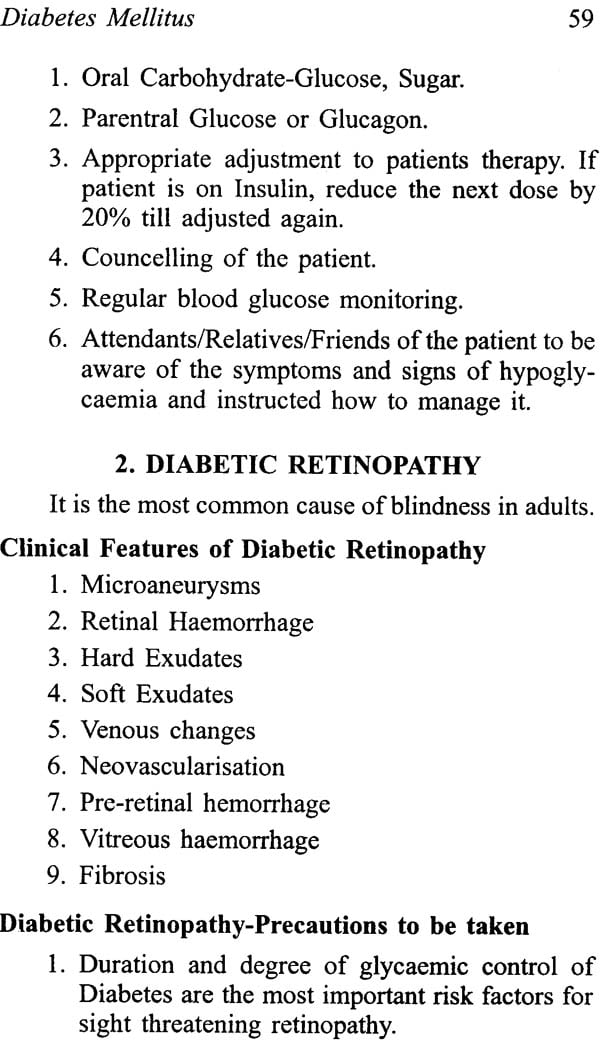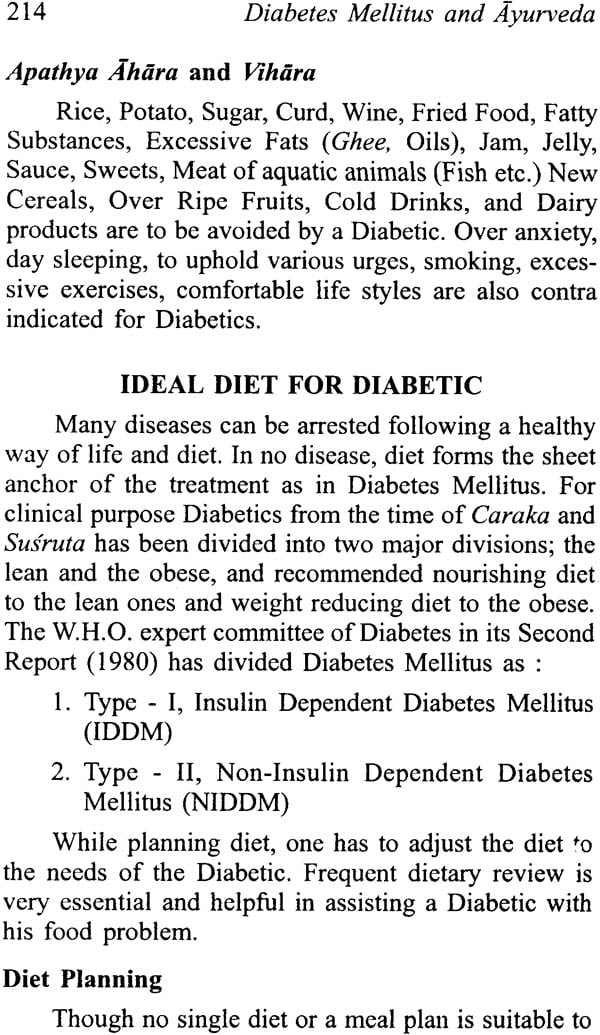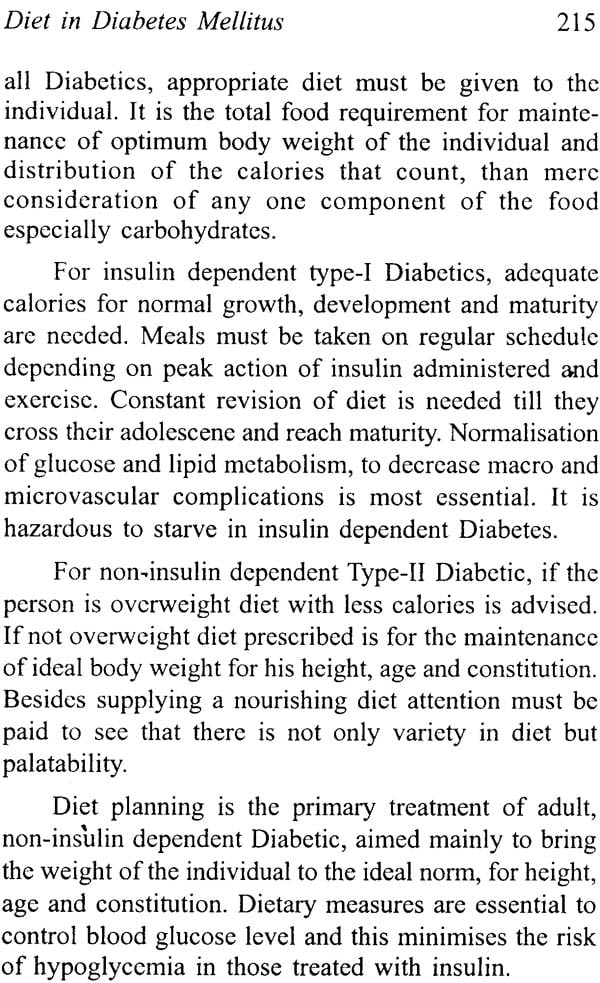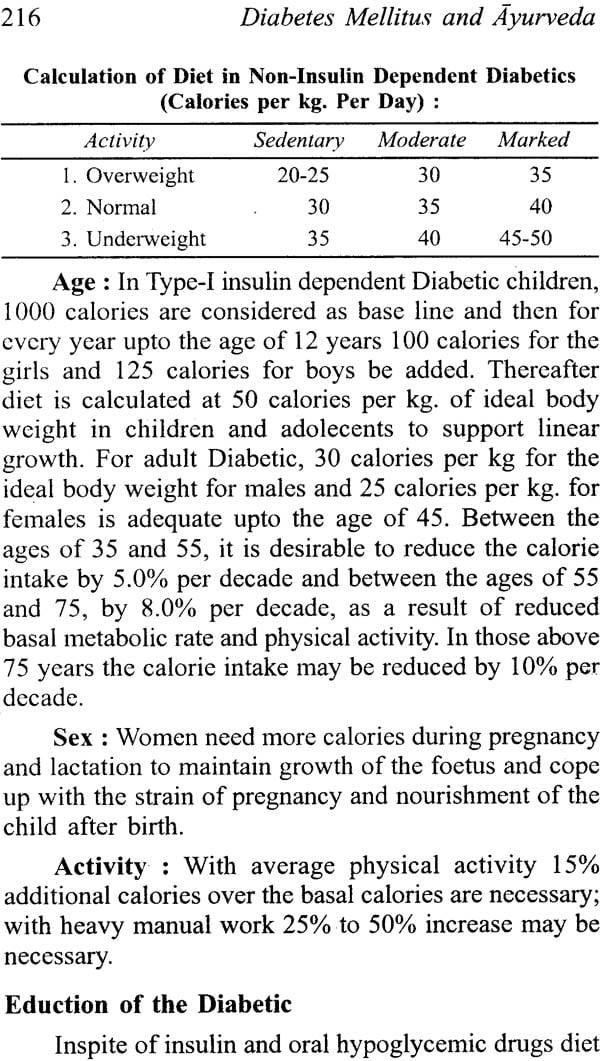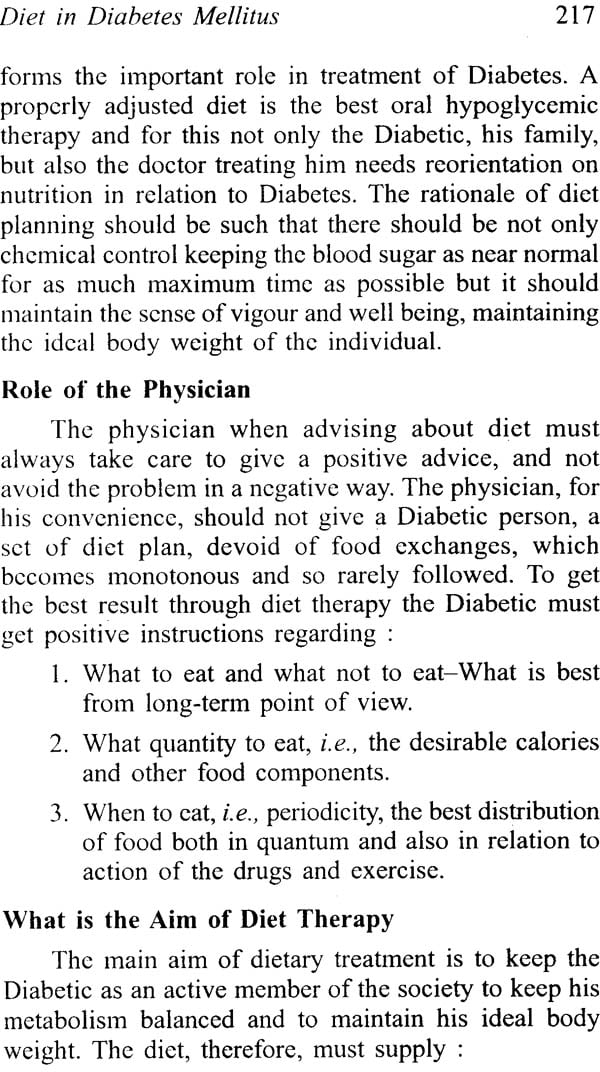
Diabetes Mellitus (Madhumeha) and Ayurveda
Book Specification
| Item Code: | NAE466 |
| Author: | Prof. Ajay Kumar Sharma |
| Publisher: | Sri Satguru Publications |
| Language: | English |
| Edition: | 2005 |
| ISBN: | 9788170308393 |
| Pages: | 261 |
| Cover: | Hardcover |
| Other Details | 9.0 Inch X 6.0 Inch |
| Weight | 430 gm |
Book Description
Born on May 31st, 1954 Professor Ajay Kumar Sharma graduated in Ayurveda with Medicine and Surgery from A. & U. Tibbia College, New Delhi in 1976 with throughout top rank career. He received many awards and prizes for his outstanding career. He completed his M.D. (Ay.) and Ph. D. from B.H.U. Varanasi under the guidance of his illustrious mentor Prof. R.H. Singh, Presently Vice-Chancellor, Rajasthan Ayurveda University, Jodhpur.
Prof. Sharma is now the senior most professor and head of P.G. Department of Kayacikitsa and Deputy Medical Superintendent of the Hospitals at National Institute of Ayurveda, Jaipur. He is the Chief Ayurvedic Physician and Panca karma specialist in the Institute. In the capacity of a reputed Ayurvedic physician, a capable teacher and outstanding researcher, standing researcher, Professor Sharma has published half a dozen standard books on Ayurveda and over140 research papers in various journals of National and international reputation. He has contributed a chapter to the prestigious book “Scientific Basis for Ayurvedic Therapies, published by CRC Press, Boca Reton-London-New York-Washington, D.C.
The book “Diabetes Mellitus (Madhumeha) and Ayurveda” written by the well known author Professor Ajay Kumar Sharma is a complete and comprehensive treatise on the subject. This is the first book in English which deals with the subject in all completeness and clarity covering all aspects of “Diabetes Mellius-Madhu Meha” as described in various modern texts and various treatise of Ayurveda. The entire text is richly supported with original reference from Ayurvedic classics. Latest information regarding Diabetes Mellitus has been in corporate with the objective of providing basic knowledge to readers. The book is knowledge to readers. The book is meant especially for Ayurvedic Students, Physically for Ayurvedic Students, physicians and Teachers for creating awareness among masses about the dependable holistic approach of Ayurveda in the management and prevention of “Diabetes Mellitus-Madhumeha.”
Separate chapters have been added on Modern concepts of Diabetes Mellitus, Ayurvedic concepts of prameha-Madhuneha, Diet-Pathya-Apathya in Diabetes Mellitus- Prameha-Madhumeha and Exercises and Yoga in the management of Diabetes Mellitus.
The author of the book being a senior Professor of Ayurvedic Medicine (Kayacikitsa) in National Institute of Ayurveda, Jaipur and being a reputed teacher, clinician and researcher by his book has been professional experience. It is expected that book will be useful for prospective readers.
Diabetes Mellitus is a chronic metabolic disease of multifaceted aetiology prevalent all over the world. It is not a disease of new civilization or new ecology, rather its antiquity goes back to thousands of years. Even Vedic scriptures bear mention of Diabetes like symptoms. However, the recent years have shown rapid rise in the incidence of this disease. The Indian population has shown amazingly higher susceptibility to Diabetes Mellitus which is a matter of great concern. Although a range of oral hypoglycemic agents have been now discovered besides the improved quality of Insulin replacement therapy for treatment of this grave disease but all this provides only a palliative role and cure of Diabetes Mellitus is still a remote possibility. This scenario prompts many investigators to explore the treasures of knowledge of Ayurveda to discover the mystery of this age old disease and curative remedies if any for its cure. Diabetes Mellitus strikingly resembles Madhumeha which is one of the twenty types of Prameha described in Ayurvedic classics. It seems, Prameha in totality represents Diabetes Mellitus and its 20 types represent specific clinical situations occurring in Diabetics. A critical study of the Ayurvedic literature in the light of the latest developments in the field of Dialectology reveals that Ayurveda had already conceived the finest details of aetiology, pathogenesis, clinical presentations, types and complications of this disease including its prognosis and principles of management.
Ayurveda essentially describes three kinds of Prameha viz., 1. Sahara Prameha i.e., genetic/hereditary variety, 2. Kulaja Prameha i.e., familial variety (not necessarily hereditary) and 3. Apathyaja Prameha i.e, Acquired Diabetes caused by faulty life style such as excessive consumption of high calorie diet and sedentary habits. Caraka further classifies Prameha into two varieties namely, 1. Sthula Pramehi or obese Diabetic and 2. Krishna Pramehi or thin Diabetic. This classification has been specifically projected by Caraka in the context of Treatment of Prameha advocating two distinctly different lines of management for the two types of Prameha. This classification resembles the contemporary classification of Diabetes Mellitus in Type I and Type 11.
The Ayurvedic texts describe a comprehensive concept of the pathogenesis of Diabetes Mellitus hallmarked with depletion of Agni or before system, disorder of Fat (Meda) metabolism and lowering of immune status (Ojas). Promotion of Agni and Ojas and correction of Medas seems to be the principle trio of cure approach in this disease. Thus, Ayurveda propounds a unique principle of curative management of this disease which stands the logistics of the present day science too.
Besides the fundamental principles of treatment, Ayurveda describes a large number of herbal and herbo-mineral formulations for treatment of Prameha. It also advocates a specialized pattern of dietary restrictions required for the management of Prameha where Madhura (Sweet) and Lavana (Salt) Rasas are to be reduced while Katu (Acrit), Tikta (Pungent) and Kasaya (Astringent) Rasas are advocated to be liberalised. As the Diabetics are understood to have depleted Ojas status Ayurveda advocates the use of Rasayana and Ojovardhaka remedies i.e., immuno - enhancers to promote the overall health and immune status. Susruta on priority describes Silajatu as specific Naimittika Rasayana for Prameha. This is why Silajata is profusely used in the treatment of Diabetes Mellitus even today.
I had the pleasure to go through the pre-press copy of the book "Diabetes Mellitus (Madhumeha) and Ayurved'" authored by Prof. Ajay Kumar Sharma, Professor and Head, P.G. Department of Kayacikitsa, NIA, Jaipnr. The book presents a comprehensive account of the disease Diabetes mellitus as known in Ayurveda as well as in the contemporary system of medicine. The book is endowed with the rich professional experience of the author besides his sound scholarship on the subject. I have the pleasure to recall that the author Prof. Sharma worked with me for several years for his M.D.(Ay.) and Ph.D. work related to Rasayana therapy of Ayurveda at BHU. I acknowledge with great satisfaction that Dr. Sharma has been growing well and has succeeded to contribute substantially to the contemporary Ayurvedic literature. I hope the present text will prove to be a good hand book on a subject of great contemporary significance. I wish all the best for this new publication and expect to see many more such publications from the pen of the versatile author in future.
Diabetes Mellitus is a clinical syndrome characterized by hyperglycemia due to absolute or relative deficiency of Insulin. It is a chronic metabolic disorder with multifactor aetiology. The incidence of Diabetes is on the rise world over. It is one of the most leading causes of death. If not treated effectively and in time, Diabetes Mellitus produces several complications which involve almost each and every organ of our body. Besides multiplying the risks for coronary heart disease, Diabetes enhances the incidence of Cerebro Vascular strokes. It is the leading cause of acquired blindness. Diabetes accounts for about 25 percent of cases with end stage renal failure as well as 50 percent of non traumatic lower limb amputations. The prevalence of Diabetes in India is currently reported to be around 13-15%, which is increasing very fast and which is a matter of great concern. Although lots of oral hypoglycemic agents and improved quality of Insulin are available in Modern system of Medicine for treatment of Diabetes, but all these play palliative role and cure of Diabetes Mellitus is yet to be invented. Continuous treatment with Modem drugs maintains Blood sugar levels with in normal range but the quality of life of the patients of Diabetes is not improved.
Diabetes Mellitus strikingly resembles with Madhumeha which is one of the twenty types of Prameha as described in various Ayurvedic treatise. In various Ayurvedic classics primarily three types of Prameha are described on the basis of their aetiology-
1.Sahaja Prameha (Genetic/Hereditary)
2.Kulaja Prameha (Familial)
3.Apathyaja Prameha (Acquired)
All Parmesans if not treated properly, may be converted in Madhumeha (Diabetes Mellitus) in due course of time. In Ayurvedic classics great emphasis has been laid over promotion of Agni and Ojas with correction of Medasa (Fat metabolism) for the management of Madhumeha (Diabetes Mellitus) along with modified Diet and life styles. In Ayurveda a large number of herbal, herb mineral and metallic formula- tines are described for effective management of Prameha- Madhumeha (D.M.). In addition various Rasayana Drugs and Ojovardhaka modalities are also described in Ayurveda which promote the over all health and Immune status of the patients of Prameha-Madhumeha (D.M.). Amelia, Silajatu, Gugulu and Leasing are effective Ramayana drugs, which act as anti oxidant agents in the management of this disease. Susruta has described Silajatu as a specific Naimittika Ramayana for Prameha- Madhumeha (D.M.). It is experienced that if holistic approach of Ayurveda is employed in the management of Prameha-Madhumeha (D.M.), the results are much quality of life with remote possibilities of development of Diabetic complications.
The basic objective of writing this book is to highlight the holistic and rational approach of Ayurvedic system of medicine in the management of Prameha- Madhumeha (Diabetes Mellitus) which seems to be more result oriented and successful. As already pointed out that the objective of treatment of a patient of Diabetes mellitus is not merely keeping his Blood Sugar level with in normal range with oral hypoglycaemic agents/ Insulin, but it is of utmost importance to prevent the occurrence of Diabetic complications along with improving the quality of his life, which is possible with holistic Ayurvedic approach only.
The book is divided into four units. 1st unit deals with modern concepts of Diabetes Mellitus. The second unit consists of Ayurvedic concepts of Prameha- Madhumeha in details. In third unit Diet in Diabetes mellitus is described in details. Various Ayurvedic and modern concepts of diet in relation to Prameha-Madhumeha (Diabetes Mellitus) are discussed in details. Unit four contains exhaustive description of Exercises and Yoga in the management of Diabetes Mellitus. The book provides a comprehensive Bibliography and opens avenues for further reading. The author of this book being teacher, physician and researcher in this field has utilized his professional experience with clinical medicine of Ayurveda in compiling the present book. It is hoped and believed that this small effort will prove.
| Preface | vii | |
| Foreword | xi | |
| Acknowledgements | xv | |
| Key to Transliteration | xix | |
| Abbreviations | xxi | |
| 1 | Unit 1: Diabetes Mellitus Modern Concepts | 1-66 |
| Introduction | 1 | |
| History | 2-4 | |
| Epidemiology | 4-6 | |
| Aetiology | 6-10 | |
| Pathophysiology | 10-20 | |
| Classification | 20-21 | |
| Diagnosis | 22-34 | |
| Clinical Features | 34-43 | |
| Management | 43-55 | |
| Complications | 55-66 | |
| Prevention | 66 | |
| 2 | Unit 2: Prameha Madhumeha Ayurvedic Concepts | 67-178 |
| Introduction | 67-71 | |
| History | 71-78 | |
| General Considerations | 78-84 | |
| Nidana (Aetiology) | 84-97 | |
| Samprapti (Pathogenesis) | 97-103 | |
| Purva Rupa (Prodromal Symptoms) | 103-105 | |
| Rupa (Signs/Symptoms) | 105-120 | |
| Bheda (Classification) | 108-120 | |
| Rupa Vinascaya (Diagnosis) | 120-126 | |
| Upadrava (Complication) | 126-128 | |
| Prameha Pidika | 128-134 | |
| Sadhyasadhyata (Prognosis) | 134-136 | |
| Cikitsa (Treatment) | 137-178 | |
| 3 | Unit 3: Diet in Diabetes Mellitus | 179-225 |
| Pathy- Apathyan in Prameha (Ayurvedic Concepts) | 179-191 | |
| (Modern Concepts) | 191-215 | |
| Apathya (Unwholesome Dist) | 212-214 | |
| Ideal Diet for Diabetic | 214-225 | |
| 4 | Unit 4: Exercises and Yoga in the Management of Diabetes Mellitus | 226-235 |
| 5 | Bibliography | 236-239 |
